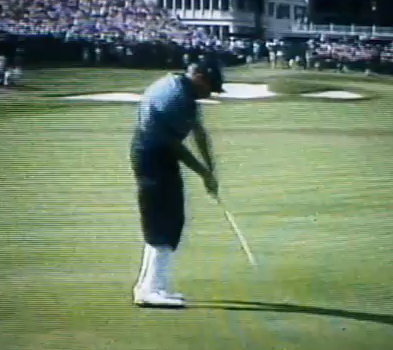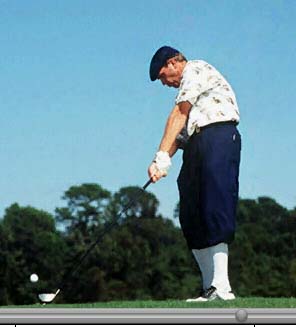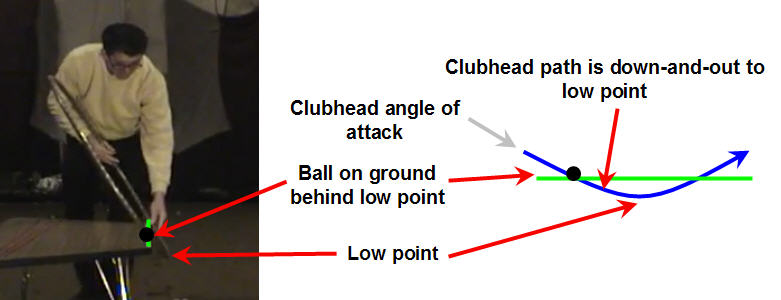Post by imperfectgolfer on Apr 29, 2011 11:41:07 GMT -5
In another thread, we discussed the steepness of the shoulder turn angle/arm motion in the backswing.
That brings into question the advantages/disadvantages of steep versus shallow downswing planes.
I think that a shallow clubshaft plane in the downswing is advantageous, and that it allows for a shallow clubhead attack angle and an in-to-out, or in-to-square-to-in clubhead path through impact. By contrast, a steep clubshaft plane in the downswing leads to the greater possibility of an out-to-in clubhead path through impact and a too steep clubhead attack angle.
Consider two steep swings.
Payne Stewart swing video
Here are capture images.
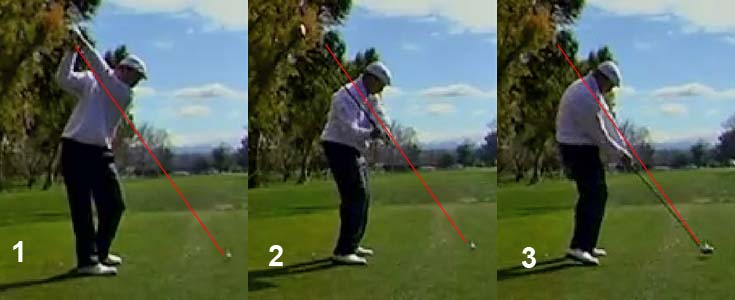
Note that his hands are just above the TSP at the end-backswing position - image 1; and just below the TSP in the mid-downswing (image 2) and at impact (image 3).
Steve Marino has an even steeper downswing clubshaft plane, and he is the first golfer that I have seen who comes down steeper than the TSP.
Steve Marino swing video
Here are capture images
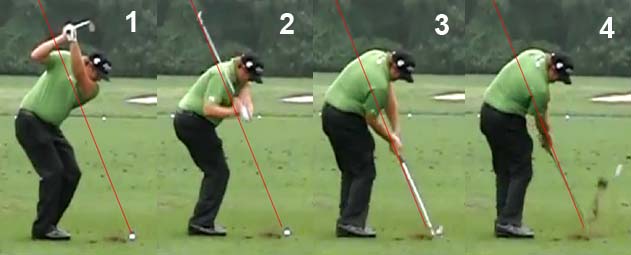
Note that his hands/club are above the TSP at his end-backswing position (image 1), in his mid-downswing (image 2) and at impact (image 3). Note that his hands/club move inside-left after impact (image 4). He has an out-to-in clubhead path through impact, and note how his ball starts off well to the right. I think that it is difficult to hit push draws with that swing pattern.
Interestingly, one would think that Hardy would classify both of these golfers as 2PS golfers. However, Hardy states that a critical distinction is the impact alignment.
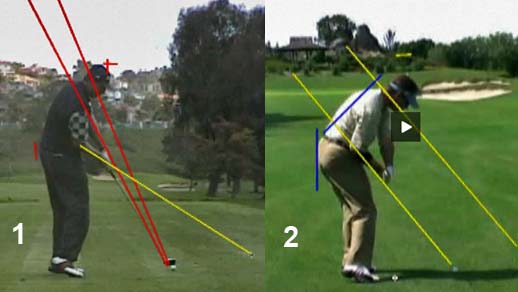
Image 1 shows a Hardy 2PS alignment at impact - right forearm points outside the ball and left arm points at the ball. According to that definition, Steve Marino is a 2PS golfer while Payne Stewart is a OPS golfer because his right forearm points at the ball while his left arm points well inside the ball. I think that it is ridiculous to classify Payne Stewart as a Hardy OPS golfer. Hardy always previously stated that Payne Stewart was a prototypical 2PS golfer.
Jeff.
That brings into question the advantages/disadvantages of steep versus shallow downswing planes.
I think that a shallow clubshaft plane in the downswing is advantageous, and that it allows for a shallow clubhead attack angle and an in-to-out, or in-to-square-to-in clubhead path through impact. By contrast, a steep clubshaft plane in the downswing leads to the greater possibility of an out-to-in clubhead path through impact and a too steep clubhead attack angle.
Consider two steep swings.
Payne Stewart swing video
Here are capture images.

Note that his hands are just above the TSP at the end-backswing position - image 1; and just below the TSP in the mid-downswing (image 2) and at impact (image 3).
Steve Marino has an even steeper downswing clubshaft plane, and he is the first golfer that I have seen who comes down steeper than the TSP.
Steve Marino swing video
Here are capture images

Note that his hands/club are above the TSP at his end-backswing position (image 1), in his mid-downswing (image 2) and at impact (image 3). Note that his hands/club move inside-left after impact (image 4). He has an out-to-in clubhead path through impact, and note how his ball starts off well to the right. I think that it is difficult to hit push draws with that swing pattern.
Interestingly, one would think that Hardy would classify both of these golfers as 2PS golfers. However, Hardy states that a critical distinction is the impact alignment.

Image 1 shows a Hardy 2PS alignment at impact - right forearm points outside the ball and left arm points at the ball. According to that definition, Steve Marino is a 2PS golfer while Payne Stewart is a OPS golfer because his right forearm points at the ball while his left arm points well inside the ball. I think that it is ridiculous to classify Payne Stewart as a Hardy OPS golfer. Hardy always previously stated that Payne Stewart was a prototypical 2PS golfer.
Jeff.


